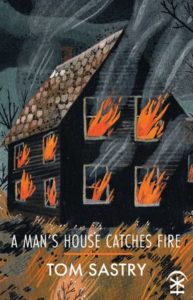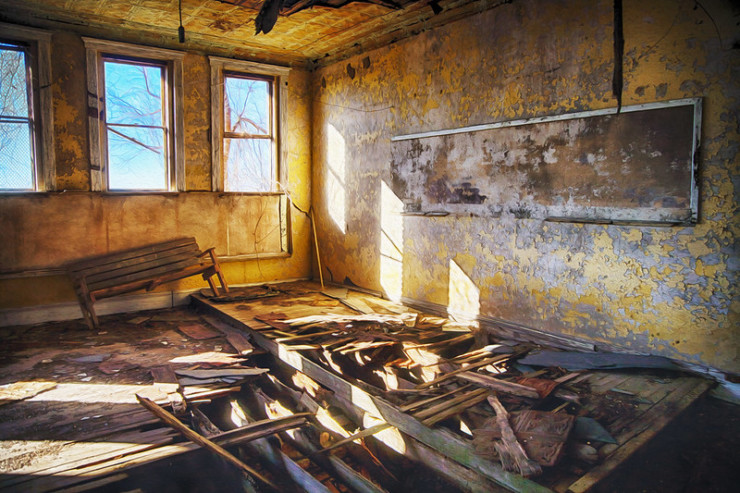In 2016, the then-Poet Laureate of Britain, Carol Ann Duffy, chose Tom Sastry as one of the Laureate’s Choice Poets. He published a well-received pamphlet (what Americans call a chapbook) entitled Complicity, which became a Poetry School Book of the Year and a choice of the Poetry Book Society.
His first full poetry collection, A Man’s House Catches Fire, was published in Britain in late 2019. In one of those strange coincidences that can happen, the collection fits the current moment of coronavirus, self-quarantines, and societal and economic upheaval. I had ordered it several weeks ago, long before the virus came ashore in the United States. I grew wider-eyed as I read it, and simply because it fits.
The collection comprises some 44 related poems, beginning with the title poem. A man’s house catches fire, and he loses everything familiar about his life. As a result, everything changes around him, or at least everything seems to change. Sometimes things look deceptively the same as before the fire. But that look is ephemeral. What he longs for is what he considers a return to normal. (For this poem, I’ve retained the British spelling of the title).
Normalisation

in tins under the stairs. The crisis,
like the weather, is changeable. Some days
the shops are full, the power constant.
Some days the streets are calm. The news is still
earnest nothings, outrage, sport and gossip.
They haven’t yet asked for your passwords.
The leaves turn. You still have a job.
The wild existence the hippies wanted
is here. We are a tribe with toasters.
We sing to the fire. People listen more
to the world beyond words, feel the warm gift
of fragile bodies. Keep Your Head Down
as the slogan says. Then Hold It. High.
Two weeks’ worth of tins, or canned food, is secured under the stairs. The personal crisis, like the broader general crisis, changes from day to day. Some days, everything appears like it was. But the appearance of normalization is only that, the appearance. “Normalization” doesn’t last, because it can’t.

Tom Sastry
Time passes. The seasons turn. More things change. Nothing is left unaffected. But the man survives to keep telling his new story, even as the last poem reminds us that “Catastrophe lives at the end of the street.”
Sastry is also the co-editor of Everything That Can Happen: Poems About the Future (Emma Press, 2019). He’s also gaining a reputation as a spoken word artist, and a collection of his performance poems is scheduled to be published later in 2020.
A Man’s House Catches Fire smacks you upside the head. What it says, at least to this reader, is that this present moment and present crisis will pass, but we will be forever changed in ways we never expected.
Related:
Carpool Poetry: Suzannah Evans & Tom Sastry
Photo by Patrick Emerson, Creative Commons, via Flickr. Post by Glynn Young.
__________________________

“I require all our incoming poetry students—in the MFA I direct—to buy and read this book.”
—Jeanetta Calhoun Mish
- Poets and Poems: Michelle Ortega and “When You Ask Me, Why Paris?” - April 10, 2025
- Robert Waldron Imagines the Creation of “The Hound of Heaven” - April 8, 2025
- Poets and Poems: Luci Shaw and “An Incremental Life” - April 3, 2025

Maureen says
Wonderful choice of poem to feature. Sastry’s a seer.